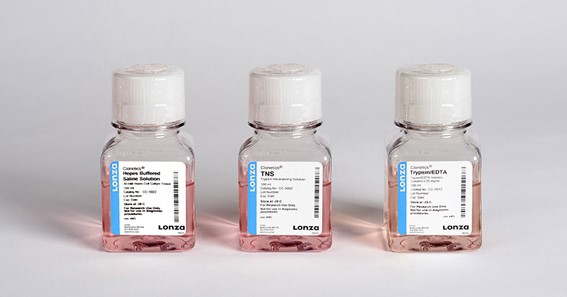Are you curious to know what is HEPES? You have come to the right place as I am going to tell you everything about HEPES in a very simple explanation. Without further discussion let’s begin to know what is HEPES?
In the realm of scientific research, the use of specialized chemicals and reagents is crucial for accurate and reliable results. One such compound that plays a vital role in various laboratory applications is HEPES. This commonly used buffering agent has found its place in cell culture, molecular biology, and biochemical studies. In this blog, we will explore the world of HEPES, its properties, functions, and the significant contributions it makes to scientific research.
What Is HEPES?
HEPES, an acronym for 4-(2-Hydroxyethyl)piperazine-1-ethanesulfonic acid, is a zwitterionic buffering agent. It is a sulfonic acid derivative with a pKa (acid dissociation constant) value of approximately 7.55 at 25°C, making it an effective buffer in the physiological pH range of 6.8 to 8.2. HEPES is water-soluble, chemically stable, and exhibits low cellular toxicity, making it a popular choice for biological research.
Functions And Applications Of HEPES:
- Buffering Agent: HEPES is primarily used as a buffering agent in cell culture media, where it helps maintain a stable pH. It resists changes in pH by accepting or donating protons, keeping the environment conducive to cell growth and metabolic processes. The ability to maintain a consistent pH is crucial for the viability and functionality of cells in vitro.
- Protein And Enzyme Studies: HEPES is widely employed in biochemical and molecular biology studies involving proteins and enzymes. It provides a stable pH environment, allowing researchers to investigate the structure, function, and interactions of proteins. HEPES buffers are commonly used in protein purification, enzyme assays, and protein crystallization experiments.
- Electrophysiology: HEPES is frequently utilized in electrophysiological experiments, such as patch-clamp recordings. Its buffering capacity ensures that the extracellular and intracellular solutions used in these experiments maintain a stable pH, thereby enabling accurate measurement of electrical currents across cell membranes.
- Medicinal And Pharmaceutical Research: HEPES is also employed in pharmaceutical research, particularly in the formulation of drugs and drug delivery systems. Its buffering capacity helps maintain the stability and efficacy of pharmaceutical compounds during storage and administration.
Advantages Of HEPES:
- pH Stability: HEPES is highly effective at maintaining a stable pH within the physiological range. Its buffering capacity resists pH changes even in the presence of metabolic byproducts or other factors that may alter the pH of the experimental system.
- Low Cellular Toxicity: HEPES has minimal toxic effects on cells and biological systems, making it suitable for cell culture applications. It does not interfere significantly with cellular functions, ensuring accurate and reliable experimental results.
- Versatility: HEPES is compatible with a wide range of biological and biochemical assays, making it a versatile choice for various research applications. Its stability and compatibility with diverse experimental conditions contribute to its popularity in scientific laboratories.
Conclusion:
HEPES, a zwitterionic buffering agent, serves as a valuable tool in scientific research. Its ability to maintain a stable pH, low cellular toxicity, and versatility make it a preferred choice in cell culture, protein studies, electrophysiology, and pharmaceutical research. As researchers continue to explore the intricate mechanisms of biological systems, HEPES plays an indispensable role in providing a stable and controlled environment, facilitating accurate observations and advancing our understanding of the complexities of life at the molecular level.
On Eagerclub you will get to know more interesting topics like these.
FAQ
What Is HEPES Solution Used For?
Specifically, HEPES buffer is used to maintain the ideal conditions for cell culture. Therefore, it’s classed as a biological buffer and is best suited for microbiology and histology. It’s also useful in medicine as part of diagnostic laboratory procedures.
What Does HEPES Do In Cell Culture?
HEPES buffer used in cell culture
HEPES has no nutritional benefits to cells but can be added to buffer cell culture media at pH 7.2 through 7.6. Therefore, the addition of HEPES can allow for extra buffering capacity when cell culture requires extended periods of manipulation outside of a CO2 incubator.
What Is HEPES For Buffer Solutions?
HEPES Buffer Solution is a biological buffer used in cell culture media. Selection of suitable nutrient medium is dependent on type of cell, conditions of culture, and degree of chemical definition required for the cell culture application.
What Are The Benefits Of HEPES Buffer?
Compared with other buffers such as PBS (phosphate buffered saline) and TRIS, HEPES has higher stability in maintaining the pH values of the cell culture media, that’s also the reason why HEPES is widely used in cell culture , tissue culture, protein purification and extraction, immunoprecipitation, cell lysis, live …
I Have Covered All The Following Queries And Topics In The Above Article
What Is HEPES Buffer
What Is HEPES Used For
What Is HEPES Buffer Used For
HEPES Buffer Calculator
HEPES Free Acid
HEPES Buffer Composition
How Does HEPES Buffer Work
HEPES Sigma
HEPES Buffer Recipe
HEPES Ph
What Is HEPES
What is the purpose of HEPES
What is HEPES solution used for
